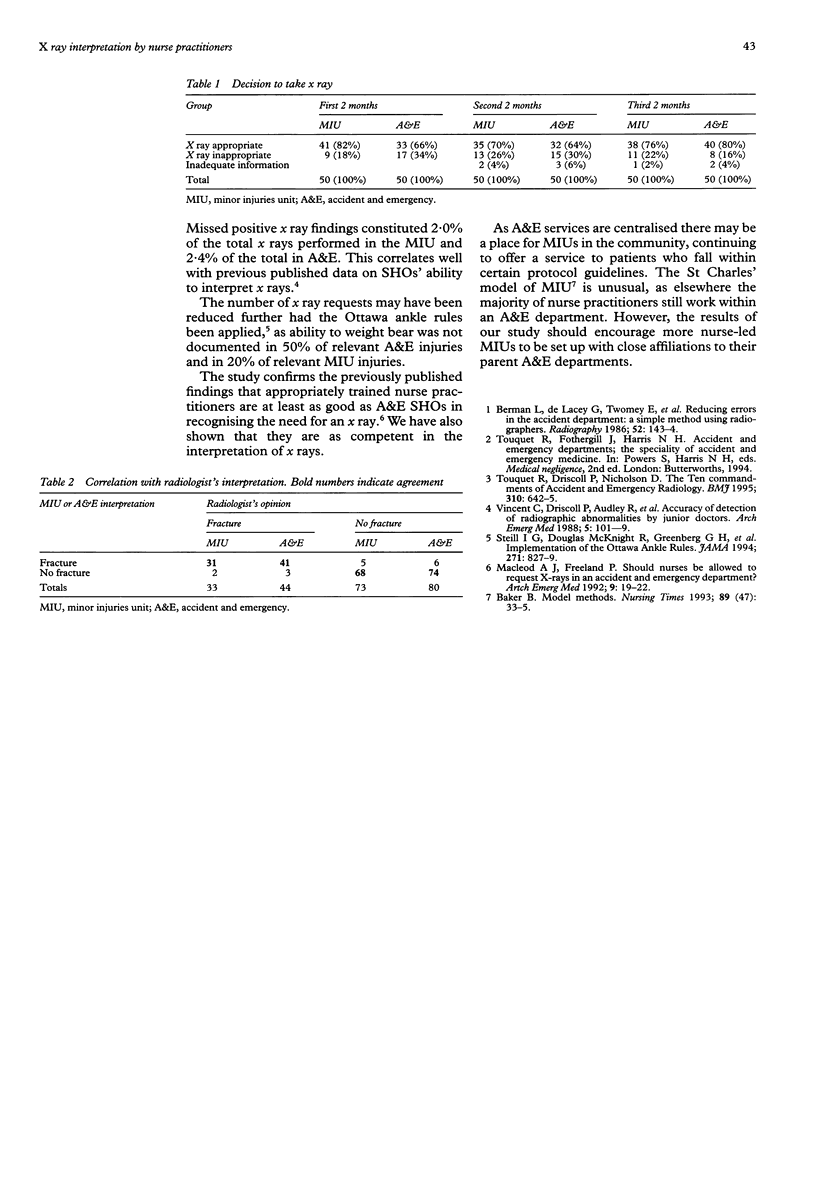Abstract
OBJECTIVE: To compare nurse practitioners with senior house officers (SHOs) for their ability to request and interpret correctly a limited range of x ray views of patients attending a minor injuries unit. DESIGN: Retrospective analysis of case records. METHODS: 150 accident and emergency (A&E) records with x ray requests were randomly selected from the SHOs' first, second, and third 2-month period of their 6-month appointments; 150 record cards were randomly selected from a nearby minor injuries unit over the same period. Copies of the records were reviewed blind and a decision made as to whether x ray requests were appropriate; x ray interpretation was compared with that of a consultant radiologist. RESULTS: 106 x rays were taken on the MIU patients (71%) and 124 on the A&E patients (83%). There was no statistically significant differences in the ability of the nurse practitioners and the SHOs to request and interpret appropriate x rays. In both groups the decision to carry out an x ray was considered appropriate in 70% of patients; x rays were positive in about one third. The sensitivity of radiological interpretation was 93% in both groups, and there were 2% missed positives. CONCLUSIONS: Appropriately trained nursae practitioners are at least as good as SHOs in recognising the need for an x ray and are as competent in their interpretation.
Full text
PDF


Selected References
These references are in PubMed. This may not be the complete list of references from this article.
- Baker B. Autonomous practice. Model methods. Nurs Times. 1993 Nov 24;89(47):33–35. [PubMed] [Google Scholar]
- Macleod A. J., Freeland P. Should nurses be allowed to request X-rays in an accident & emergency department? Arch Emerg Med. 1992 Mar;9(1):19–22. doi: 10.1136/emj.9.1.19. [DOI] [PMC free article] [PubMed] [Google Scholar]
- Stiell I. G., McKnight R. D., Greenberg G. H., McDowell I., Nair R. C., Wells G. A., Johns C., Worthington J. R. Implementation of the Ottawa ankle rules. JAMA. 1994 Mar 16;271(11):827–832. [PubMed] [Google Scholar]
- Touquet R., Driscoll P., Nicholson D. Teaching in accident and emergency medicine: 10 commandments of accident and emergency radiology. BMJ. 1995 Mar 11;310(6980):642–645. doi: 10.1136/bmj.310.6980.642. [DOI] [PMC free article] [PubMed] [Google Scholar]
- Vincent C. A., Driscoll P. A., Audley R. J., Grant D. S. Accuracy of detection of radiographic abnormalities by junior doctors. Arch Emerg Med. 1988 Jun;5(2):101–109. doi: 10.1136/emj.5.2.101. [DOI] [PMC free article] [PubMed] [Google Scholar]


